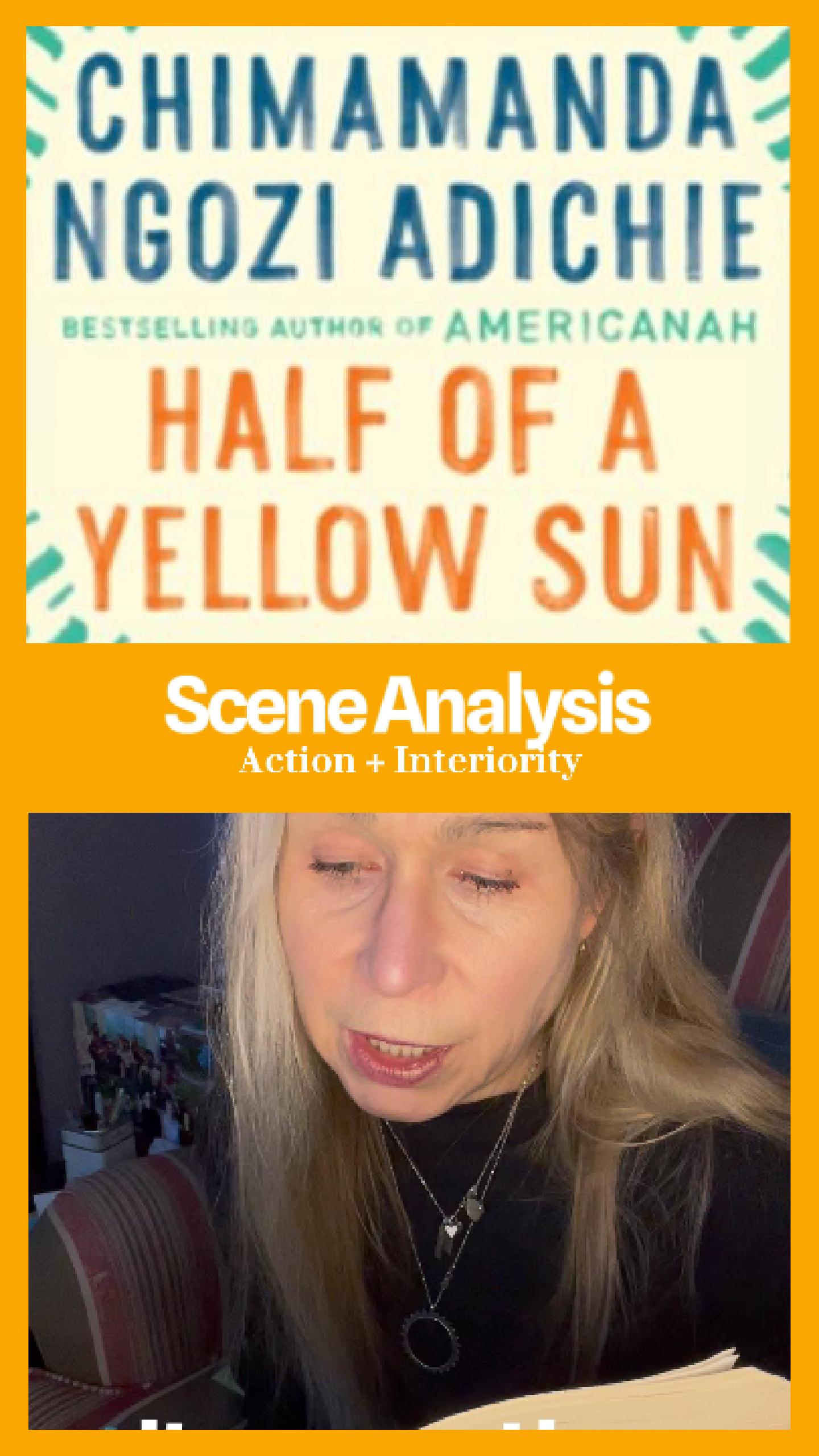Rest
So I had surgery last Monday. For only the second time in my life, I went under general anesthesia. The last thing I remember is being wheeled very rapidly down…

Warning! This essay contains some (minor) spoilers for the novel Half of a Yellow Sun by Chimamanda Ngozi Adichie. (We’re still in the first half of the book).
In her second novel Half of a Yellow Sun, Chimamanda Ngozi Adichie achieves an ideal to which I aspire: a smart, literary, highly readable love story full of cultural references, history, and vivid, textured characters––just the kind of novel I love to read and want to write. I was particularly impressed with Adichie’s technique in moving her characters around in space, as I have trouble with this. Choreography!!! I scold myself, scrawling the word in red ink in the margins of my drafts. More importantly, because of the way she weaves her character’s growing comprehension into the action of the scene using a skillful interplay of description, movement, dialogue, and interiority, we are riveted to both the inner world and the outer world of our protagonist, Olanna.
Half of a Yellow Sun takes place during the Biafran/Nigerian war of 1967-70, and although on the surface the subjects of her novel and my own (about a family who form a folk-rock band in the 1990s) have little in common, the themes are similar. Like my novel-in-progress, the external story depicting the changing times and circumstances acts almost as a backdrop (and sometimes parallel) to the internal story; a complex family saga/relationship about loyalty and betrayal.
In a crucial scene showing the revelation of betrayal, (p. 279-280) Olanna has just returned from London, and while she was gone, her husband Odenigbo slept with his mother’s servant Amala. Olanna discovers this through observing a seemingly normal set of exchanges between Odenigbo and Amala. The result is devastating to both Olanna and the reader.
I analyzed this scene, underlining the sentences that convey action or movement in red ink, the scenes that convey interiority in blue, and dialogue in green. The dialogue grounds the scene in the dynamics between the three characters: Ugwu, Olanna (narrating) and Odenigbo. Between the few lines of dialogue, we are situated in Olanna’s thoughts, or observing the other two character’s movements. There is also a sentence where we see the embodying of Olanna’s emotions: “She was not sure what the shriveling in her stomach and the racing in her chest meant” (p. 279). The scene continues, with a balance of Odenigbo’s observed dialogue and movements, from Olanna’s perspective, and her own parsing of these actions and words. She leaves the room, on her way (we are told) to her car where she will drive back to her own flat, essentially leaving Odenigbo. The thoughts move to a realization of the significance of this moment in time, creating a kind of narrative delineation between present and future: “She would always remember his expression, him looking at her as if he could never have imagined this scene and so did not know how to think about thinking about what to say or do” (p. 280)
In the sentence that follows, a crucial line that grounds the reader in time, space and emotional reality, Adichie combines action with interiority: “She turned toward the kitchen and nearly fell beside the dining table because the weight in her chest was too large, not measured to fit her size.” It’s a beautiful sentence, balancing an action that clearly demonstrates her distress and the seriousness of how Odenigbo’s betrayal impacts Olanna with a gorgeous embodied metaphor. The “weight in her chest” brings the reader right into her body and emotions, and the metaphor “not measured to fit her size” looks forward to the larger drama of the novel—the war that ravages Biafra and everyone Olanna knows. As with the movement in King Lear, the consequences of one’s decisions seem far harsher than what any character could possibly deserve. The carnage and wreckage from the Biafran war––the resulting loss of life, loss of property, the famine that killed millions of children––was certainly not measured to fit any human’s size.
The last paragraph is almost all action, but it’s a “showing” of Olanna’s internal state, as well as a foreshadowing of the war, and of the damage to Olanna’s family, including her relationship with Odenigbo. In the scene, Olanna is sitting on the backyard steps. She watches Ugwu picking avocados. She watches a hen with six chicks. Suddenly, a kite swoops down and captures a chick, causing the hen to run around in circles, squawking. “Olanna watched [the remaining chicks] and wondered if they understood their mother’s mourning dance. Then, finally, she started to cry” (p. 280).
This scene had such a huge emotional impact in part because of its subject, of course—infidelity is a huge betrayal of the love and commitment of these two characters. But the structure and balance of the scene had me holding my breath as I read, watching the three characters move around each other, with Olanna’s consciousness at the center. Ugwu, though not narrating, seems also to be holding his breath, as the reader knows that Ugwu witnessed the evidence of the betrayal. We see the knowledge dawn on Olanna in a mysterious way; she puts clues together, she “reads” Odenigbo and Ugwu and the situation to conclude the truth. Because we get the thoughts parsed out between layers of dialogue and action, we experience the dawning along with Olanna, even though we know what happened already. We feel the weight in Olanna’s chest; we sit with her and witness the carnage of the baby chick, and we feel as helpless as she does. This is drawn out so that our emotions can bloom along with Olanna’s, so that we too, at the end of the passage, are released as she is: “Then, finally, she started to cry” (p.280).